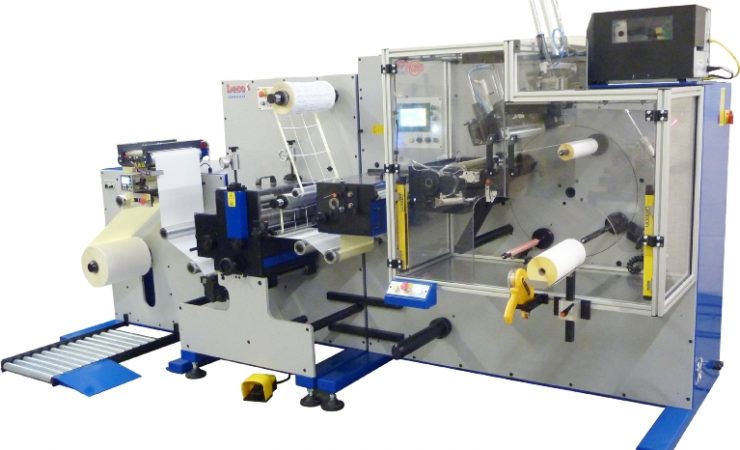Accurately slicing adhesive or extremely thin substrates at high speed is an engineering nightmare. Die manufacturers are working hard to make sure they do not stand in the way of progress for the flexo industry. Michal Lodej looks at what is on the market.
Die- cutting machinery must increase in width if it is to meet the changes demanded by the market, said Mark Laurence, sales manager at Daco Solutions. The market drivers pushing the physical boundaries of the die-cutter design are two-fold, he maintains.
‘There is a crippling lack of even semi-skilled labour out there capable of operating expensive machinery. Like it or not, there is no option but to take some of the human factor out of the equation,’ he said. The second market dynamic is cost. Higher capacity machines will be a fact of life to counteract the effects of rising label stock prices. ‘Over the quite recent past paper prices have rocketed. This has had a direct effect on the price of paper label stocks.’
Mr Laurence predicts that the next five years will see a marked shift towards wider web widths, bigger unwinds and automation to reduce downtown and increase the throughput of the machine. A typical 700mm unwind a few years ago increased to 1000mm which is now becoming the norm and we are now getting requests for non-stop unwind systems to reduce downtown further. ‘Five years ago, label producers were buying 250mm machines. Customers have since seen their profits decrease, particularly following the paper cost increases. We all need to work smarter and more efficiently and that means higher capacity machines with a lower unit production price.’
Daco Solutions developed the Daco PLD350, three spindle semi-automatic turret rewind with rotary die-cutting and auto cut and apply head. The unit comes with job storage, in two sizes, 700mm and 1000mm, and with non-stop unwind options. The Daco TD350 comes with 1000mm standard unwind with optional non-stop unwind and a non-stop fully automatic turret rewinder.
Removing downtime
RotoMetrics has integrated Electro Optic die-cutting technology into its own products, in order to reduce its customer’s downtime. The company’s RotoRepel Adhesive Control Treatment reduces adhesive build-up for flexible and solid dies, and significantly reduces the number of press shutdowns.
The company is continually working towards consistency, levelness, sharpness and increased longevity across all its flexible dies. AccuPrime is the company’s workhorse of the flex die line, engineered to convert a wide range of both paper and synthetic materials. AccuStar UltraFilm is built to convert the market’s wide variety of films and liners with exacting precision tolerances.
Dura Line is more robust, produced for considerable extra life, protecting the cutting lines against the scrubbing of high-gloss paper, thermal paper, matted foils, writeable colours and lacquers, luminescence inks, metallic inks, whitener and pastel colours.
For very thin films, Gold Line Special is produced to meet the tightest tolerance requirements to provide consistent, perfect cutting ability with no die strike and height parallelism for the thinnest films on the fastest and widest presses.
Thinner liners offer significant benefits to the converters; they reduce material costs, cut down by half on the amount of liner wastes, lower shipping and packing costs and less down time on labelling equipment as there are more labels per roll. Canadian manufacturer, ETI, has introduced a patented die-cutting technology to help the industry process these thinner materials the Pellicut, designed for high speed applications with very thin release liners. It allows converters to die-cut on a PET liner that is 18 micron thick.
ETI Converting Equipment has obtained a US and a European patent for this die-cutting system. This machine can die-cut pressure sensitive material at a speed of 225 m/min. The Pellicut will die-cut labels on 18 micron polyester film or 30 gsm paper products with the guaranty that the die will not mark the liner during the die-cutting process and that there will be no break on the labelling machines. The module uses conventional magnetic cylinders and fast die and anvil changes. A mark-free die-cut on such thin liner with standard magnetic die cylinders is possible by means of two major improvements; the W anti-deflecting system, and equaliser system.






